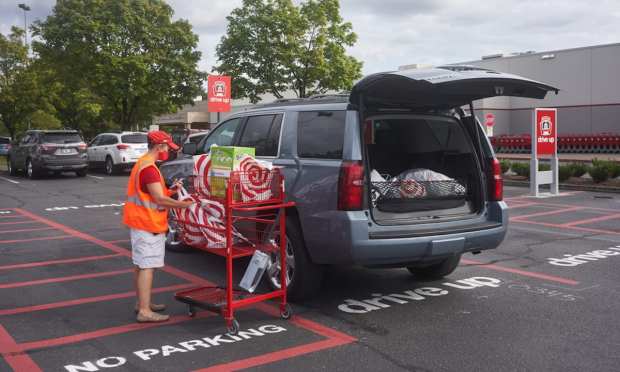New COVID Variants Delay Consumers’ Return To In-Store Shopping

Vaccinations are rolling along in the U.S. According to recent reports, over 100 million people in the U.S. — or 30.7 percent of the U.S. population — have gotten at least one dose of one of the three variations of the COVID-19 vaccine, per the latest CDC update. The official count now hovers at around 157 million COVID-19 vaccines that have been administered. That adds up to 57 million people who are fully vaccinated. That means the U.S. remains ahead of the original goal of 100 million shots in the first 100 days of the Biden administration, and more than halfway to the new goal of 200 million shots in the first 100 days.
But many Americans are continuing to stay home, according to Wall Street Journal reports citing data from the Bureau of Transportation Statistics. Outside of the states of Wyoming, North Dakota and South Dakota, Americans who spent more than 10 minutes away from their home were down 6 percent. And while Americans are going out to eat somewhat more than they once were, gyms, movie theaters, houses of worship and other local sites that tend to appeal to groups have seen their sales continue to struggle as Americans stay in.
So, what’s going on?
Part of this can be attributed to the race between the vaccine and new variations of the virus — and in some places, it looks like the virus has taken the lead. Reports are circulating that the midwest as a whole is on the verge of a fourth wave of infections, while states like Massachusetts, Michigan, Alaska, Indiana and Florida are seeing case counts rapidly climbing, even as vaccine rates continue to tick up. And case count matters to consumers: According to PYMNTS’ consumer survey, while 56 percent of people would need a COVID-19 vaccine to be widely available to get back to their pre-pandemic habits, a slightly larger proportion, 58 percent, would need to see a big drop in case numbers before getting back to something like “normal.”
Moreover, consumers’ expectations for when this will be over, according to PYMNTS’ most recent data, seem to be quite a bit longer than what merchants expect. Vaccines have helped to shorten how long consumers are planning to be somewhat on lockdown, but have not radically altered it. The average U.S. consumer believes that the pandemic would end in 289 days if vaccines were not available and that widespread vaccinations will lead to the pandemic ending in 252 days — 37 days sooner than what would otherwise be possible.
And finally, the data shows, “normal” may not look like what we remember even when it does return. Consumers have learned to like the convenience of “anytime, anyplace” shopping, and have come to appreciate a mix of digital and brick-and-mortar channels for nearly all of the products they purchase. Eighty percent of consumers who purchase clothing, accessories, games, hobbies and books do so both online and in person. Among those who buy hardware, building material and auto parts, only 69 percent buy them using both digital and physical channels.
As the race between the vaccine and the virus carries on in the U.S. and around the world, the hope is that the rapid pace of vaccinations in the U.S. — which is set to speed up in the coming weeks as more and more states are opening up shots to all adults — will be able to burn out the variants of the virus before they can deal out more damage. Whether that will happen remains an open question.
But perhaps the more interesting open question presented by PYMNTS data is how concerned customers still are about the virus, as well as how content they have become with their new habits. They may be excited to get back in the saddle again, but it also seems they’re willing to wait a little bit longer for better conditions.
